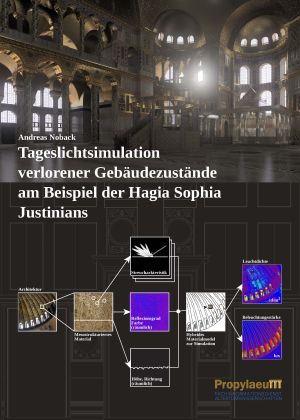
How to Cite
License

This work is licensed under a Creative Commons Attribution-ShareAlike 4.0 International License.
Published
Downloads
Tageslichtsimulation verlorener Gebäudezustände am Beispiel der Hagia Sophia Justinians
The interior lighting of Hagia Sophia has been praised since late antiquity but is no longer comprehensible in the preserved building state. By transferring methods of daylight simulation of modern buildings to historical research, it is possible to investigate the dynamic interplay of direct and diffuse lighting with the sparkle of the precious materials in the 6th century's state. In addition to its exemplary application, this work provides a theoretical framework for daylight simulation in the context of geometric reconstruction, the reconstruction of optical properties and perceptual-psychological analysis.
Supplementary data you find here: https://doi.org/10.11588/data/TONJFH






